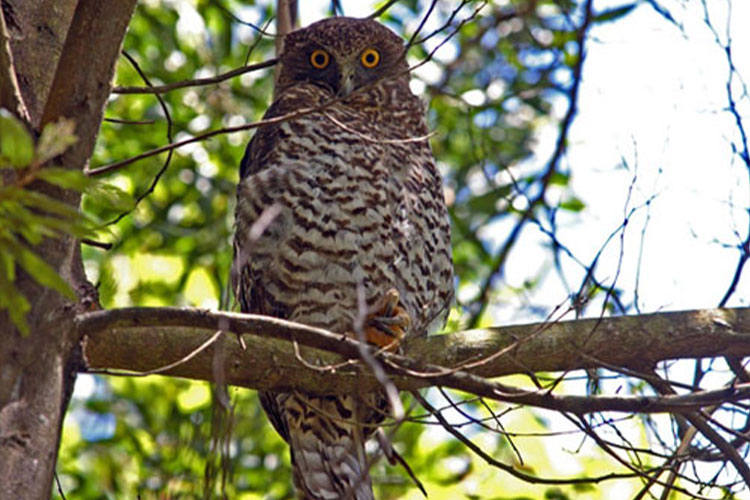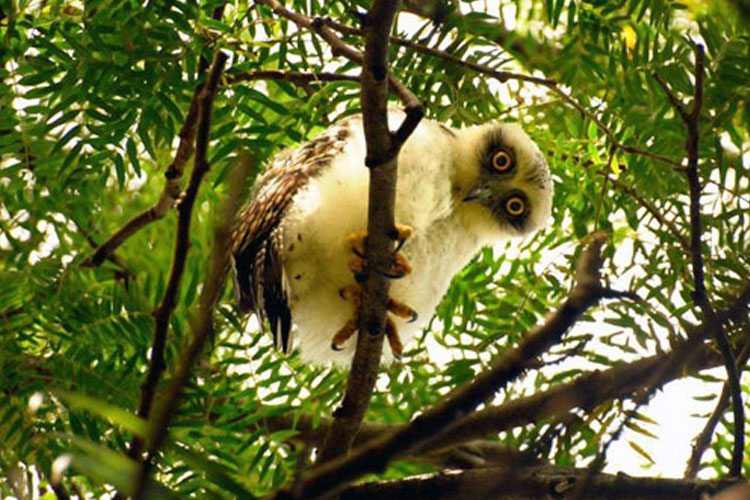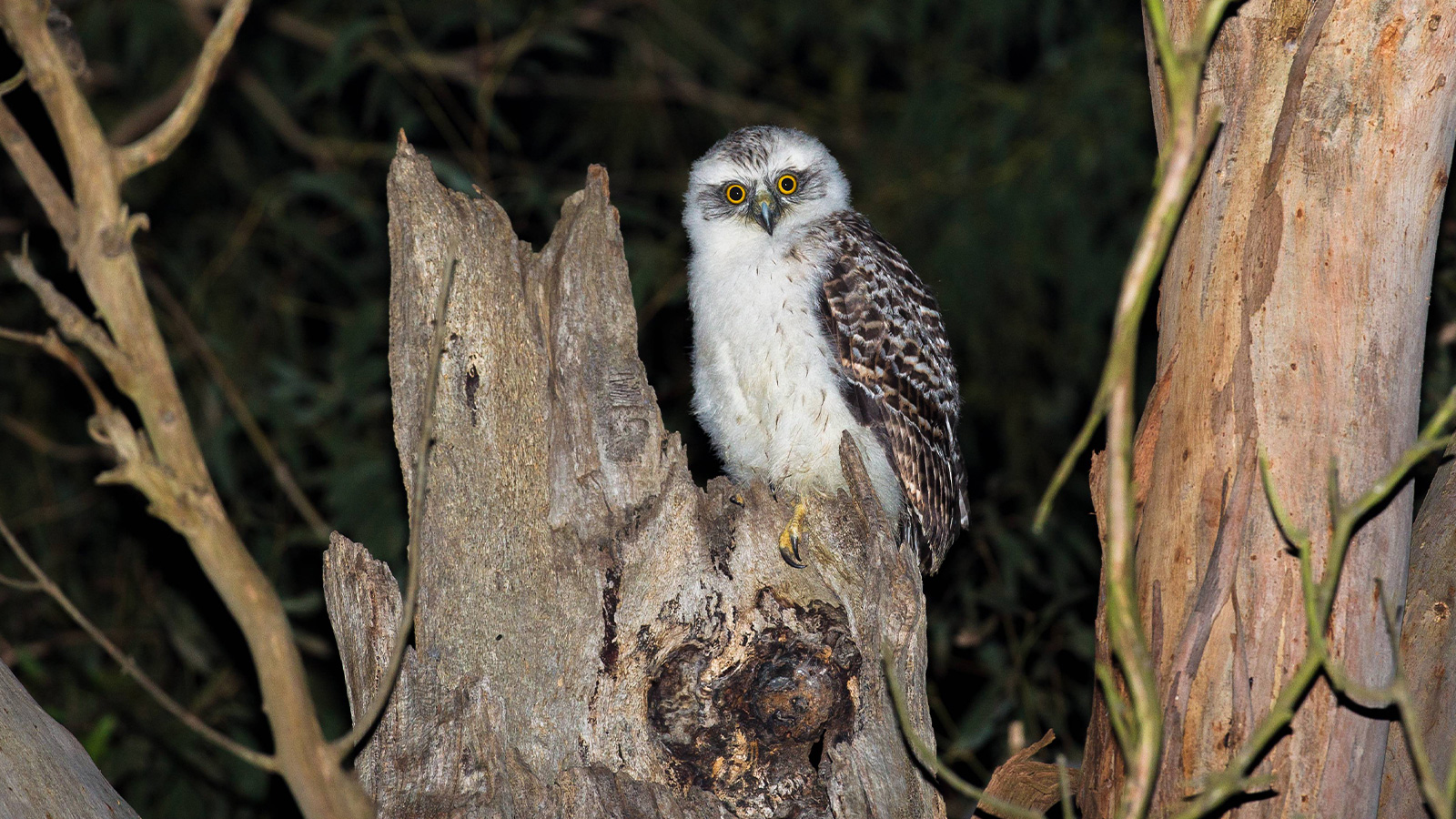Get involved and put Western Foreshores on the map.
For those interested in birds, especially the large powerful night variety, this is the bird for you! Not only are they impressively large and seemingly fearless they are also a threatened species.
The largest of Australia’s owls, Ninox strenua has a wingspan of 135cm. It’s main prey is possums of various species, though large bats such as flying foxes are also caught as well as birds in the non breeding season.
They are the only owl with a double hoot which may be familiar to some, this being the night territorial call of the male especially prominent coming in to the breeding season which runs from August to September and into October.
They roost by day, perched in the dense shade of a tree, often with the previous night’s prey held in their talons; this is when Powerful Owls are seen most often. With expanding populations of possums occurring in built-up areas, Powerful Owls are increasingly being recorded in the suburbs particularly where bush land remnants are close by. However, increasing urbanisation is likely to impact on the long-term persistence of the Powerful Owl.
Despite their size, little is known about the ecology of Powerful Owls, particularly those living in cities. Since 2011, the Powerful Owl Project run by Birdlife Australia as part of its Birds in Backyards program has collected critical data on Sydney’s Powerful Owl population, with the aid of citizen scientists. The information gained from this study is used to inform the conservation status of the Powerful Owl, and help drive management recommendations for their continued survival in urban areas.
The project collects data on their breeding behavior, diet and habitat requirements. Results so far have revealed that the average fledgling rate is 1.22 chicks per year with 70% of these occurring between mid-August and late September.
The mapping of their sites, however, has not included the Western Foreshore area of Pittwater because of a lack of volunteers. For that reason three local residents have now undertaken to collect local data for this project and would welcome any information from other community members.
If you are interested, now is the time to try and identify nest sites aided perhaps by the recordings and pictures on this helpful webpage. It is particularly useful for its’ sound recordings of the various calls.
We are also interested in providing a greater understanding of their breeding behaviour and success, diet, habitat characteristics, mortality and injury rates.
The most useful information on diet is derived from the pellets some people may have seen which are actually balls of undigested material such as fur, bones and even partial skulls vomited up by the owls. These provide very valuable information and if found please put into a clean dry envelope or similar.
If you do have any data on the owl that you would like to share please don’t hesitate to contact Birdlife Australia using the website as per the above link or any of the local project team listed below.
What to do if you spot one
If you see a powerful owl, a few simple observations will go a long way:
- Try to identify the type of tree the powerful owl nest or roost in e.g. spotted gum, turpentine, blackwood etc.
- Pinpoint on a map where you saw the nest.
- Email the information to one of the contact below.
Contacts
Virginia Leitch: email
Robin Haig: email
Angela Cooney: email
Sound recording powerful owl

Adult powerful owl

Powerful owl chick
